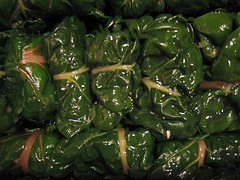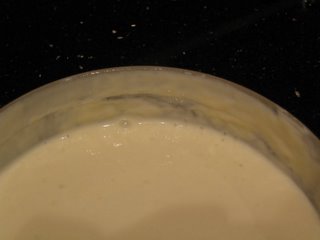 I wonder what proportion of tables of omnivores at a Thai restaurant include a green chicken curry in the order. I think the percentage would be fairly high. In fact I would hazard a guess that green chicken curry is the most ordered dish at Thai restaurants [outside Thailand]. Well, it is always included in my order!
I wonder what proportion of tables of omnivores at a Thai restaurant include a green chicken curry in the order. I think the percentage would be fairly high. In fact I would hazard a guess that green chicken curry is the most ordered dish at Thai restaurants [outside Thailand]. Well, it is always included in my order!I cannot profess to the authenticity of my method, and within my method I have degrees of authenticity to my own recipe. If I am in the mood, and craving the ritual, I will make a green curry paste from scratch with fresh ingredients ; if I am able to take advantage of a previous indulgence of the ritual, I will use some homemade paste from the freezer ; but if it is a Tuesday evening, after a hard days work, and I want something restorative, yet quick, yet tasty, I will use a packet of bought paste from the cupboard. All are good, all have their place, and their merits.
This is my recipe for a green chicken curry :
My basic proportions for 2 people are 1 chicken breast, 440mL of coconut milk ; the amount of paste used has to depend on the nature of the paste and your taste.
In a wok, fry some sliced onions in oil until golden and remove. Fry the curry paste in oil until fragrant. Add sliced or cubed chicken, frying until coated in the paste and starting to turn golden. Add the coconut milk, stir well and leave to cook gently for at least half an hour. When you are ready to eat, and the rice is almost ready, add the onions and some frozen peas, or other vegetables as you like (pea aubergines if you are lucky enough to have some), turn the heat to high and bring to a boil.
Serve on rice with a sprinkling of corriander leaves.






